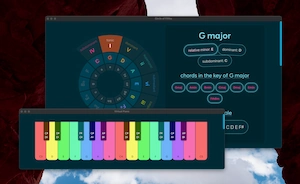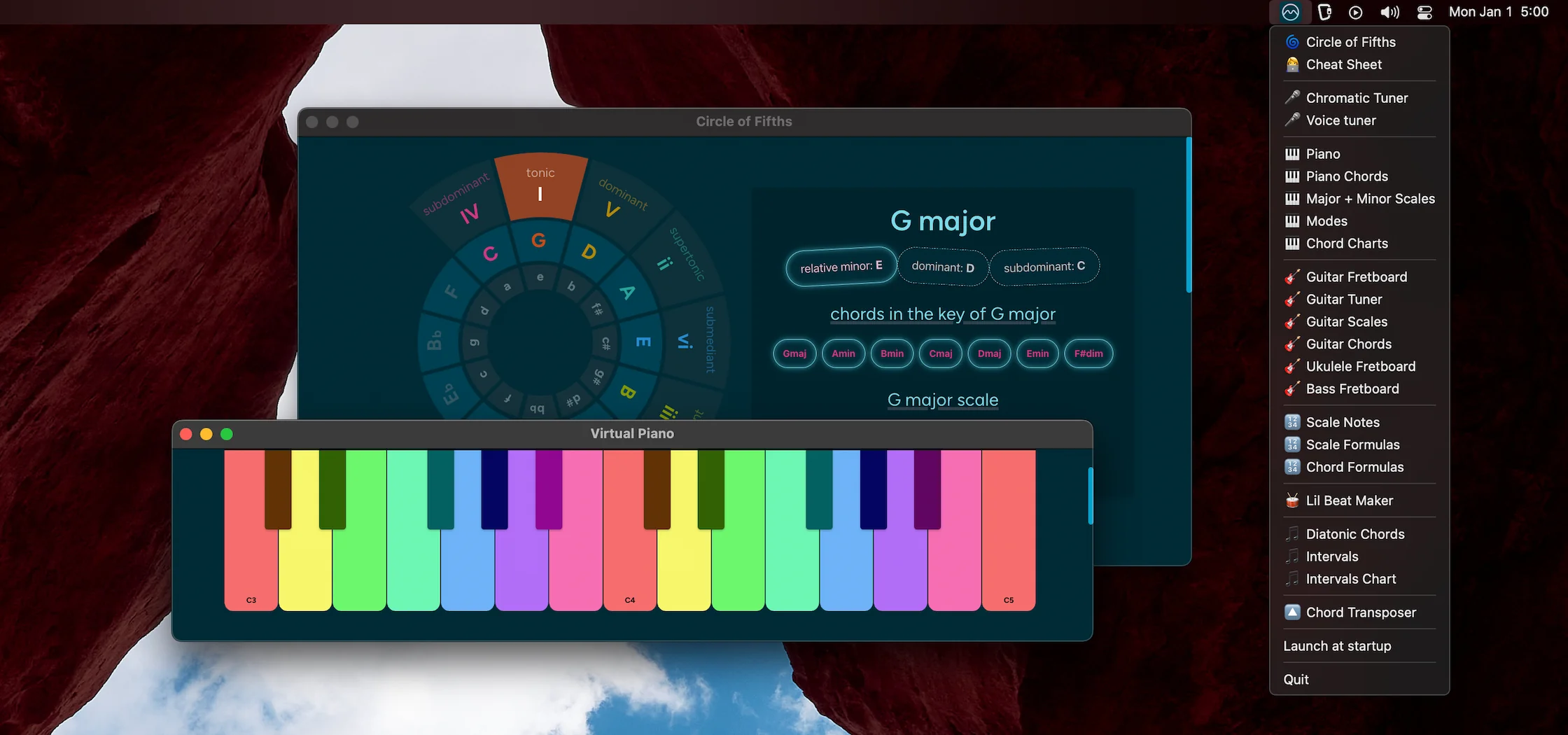Treble Clef, Bass Clef, Alto Clef & Grand Staff Note Reference
🎼 A staff (stave in
UK English) is a visual representation of pitch and rhythm for writing and
reading music. The staff is a series of 5 horizontal lines and 4 spaces where
pitches/notes are represented.
A clef like the
treble clef, the
bass clef or the
alto clef is added at the beginning of the staff to
indicate which pitches the staff lines represent.
Also check out the piano notes chart for piano
notes on the bass and treble clefs.
Treble clef notes on staff
The treble clef, also known as the G clef, represents high pitches, in particular notes that are above middle C.
The G pitch that's above middle C falls on the second line of the treble clef:
Here are the pitches from C4 (middle C) to B5 on the staff, using a treble clef:
Note how middle C (C4) falls on a ledger line below the five staff lines.
The treble clef is often used for high-pitched instruments like the violin, the clarinet and the guitar.
A common mnemonic device to remember the order of the treble clef notes is Every Good Boy Does Fine, where each line on the staff corresponds to the first letter of the words in the mnemonic.
An alternative mnemonic for the treble clef is FACE, which corresponds to the pitches that fall in the spaces between the lines of the staff.
Bass clef notes on staff
The bass clef, also known as the F clef, represents low pitches, in particular notes that are below middle C.
The F pitch that's below middle C falls on the 4th line of the bass clef:
Here are the pitches from F2 to E4 (E above middle C) on the staff, using a bass clef:
With the bass clef, note how middle C (C4) fall on the first ledger line above the five staff lines.
The bass clef is often used for low-pitched instruments like the bass guitar, the cello and the trombone.
A common mnemonic device to remember the order of the bass clef notes is Good Burritos Don't Fall Apart, where each line on the staff corresponds to the first letter of the words in the mnemonic.
An alternative mnemonic for the bass clef is All Cows Eat Grass, which corresponds to the pitches that fall in the spaces between the lines of the staff.
Alto clef notes on staff
The alto clef, also known as the C clef or the viola clef (as it's mostly used for the viola), represents pitches around middle C and the alto clef itself centers around middle C.
Middle C falls on the 3rd line of the alto clef:
Here are the pitches from C3 to B4 (B above middle C) on the staff, using an alto clef:
A common mnemonic device to remember the order of the alto clef notes is Fat Alley Cats Eat Garbage, where each line on the staff corresponds to the first letter of the words in the mnemonic.
Grand staff notes
The grand staff is a combination of two staves, with the treble clef on the first staff and the bass clef on the second, bottom staff.
The grand staff is useful to represent a wider range of pitches and works well for instruments like the piano and the organ.
As middle C falls on the first ledger line below the treble clef and on the first ledger line above the bass clef, on the grand staff middle C can be represented either way. Here middle C is represented on both staves of the grand staff:
And here are the pitches from F2 to B5 on the grand staff:



